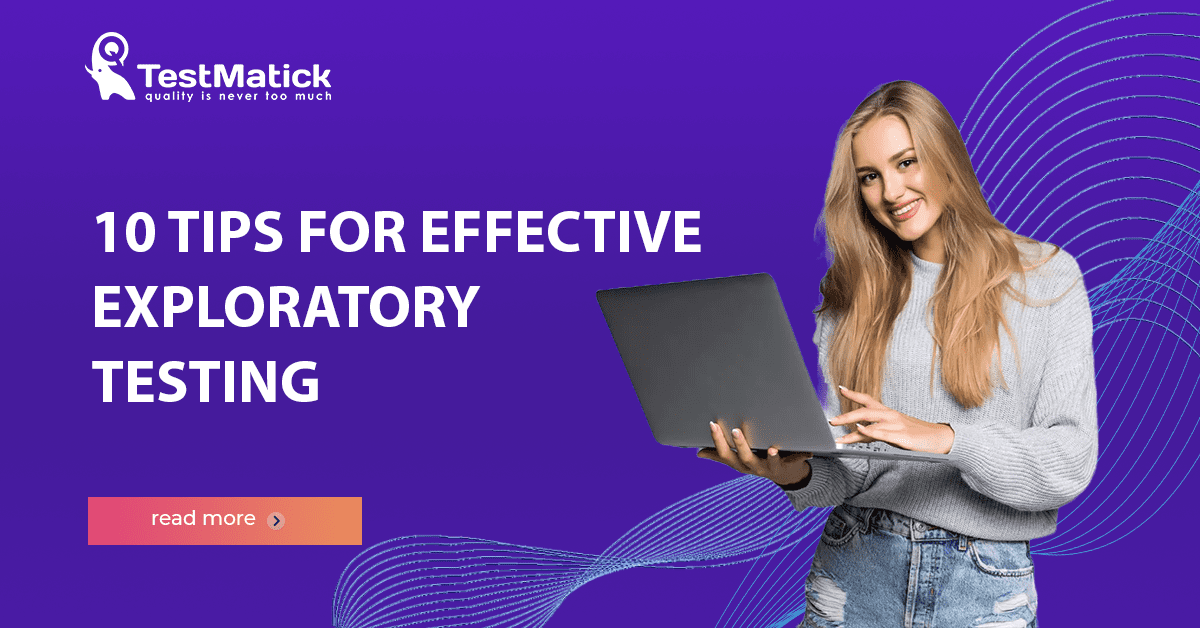Without a doubt, every tester-researcher needs to find not only a bug but also its essence. However, classical exploratory testing is much more than just a monotonous search for a problem.
Exploratory testing allows testers to directly influence the product. The tester is focused on assessing what is really in front of him, and not on what people say should be there. This is a very important part of the process of developing a product that customers want.
The following are 10 useful and time-tested tips on how exploratory testing can be helpful.
1. Exploratory Testing Is Everywhere
Don’t focus on working products only. You can devote time to studying the layout or mockup. Analyze the database, diagrams, API work, features, GUI, specifications, and so on. It is necessary to study absolutely everything where you can get useful information.
2. Try to Think in Terms of an Exploratory Image
In general, exploratory testing is a collection of the experimenter’s thoughts. Try to make your professional curiosity purposeful, and reinforce your detective approach. Try to search for the truth and answers to questions about possible risks and assumptions.
3. Identify the Current Test Context
Applying a universal method to the basics of exploratory testing will not work. What exactly is your current context? Analyze more than just the overall goals of testing and software – for example, think about whether your QA lab can collaborate and do experiments together. Delve into past business decisions and the current goals of your product company. All of this can significantly affect the kind of session reports you develop.
4. Read Explore It by Elisabeth Hendrickson
This book is a must-have to start any exploratory testing. It has absolutely everything needed to become a true professional in this software testing type.
5. Don’t Become a Hostage to Your Requirements
Test requirements, often developed in the form of a user story and marked by acceptance criteria, should not hold you down.
Your requirements should be indisputable for test ideas and dialogues, not point factors that can affect the application points of exploratory testing.
6. Use Research Time Constraints
Time makes you focus on 1 task. Of course, it is very easy to simply keep exploring until you find something. But it will be much better to use a time-limited session that allows you to stop in time, take a step back, and get the most out of debriefing.
It’s best to use sessions no longer than 90 minutes.
7. Divide Solutions Into Categories
Give your notes meaning and organization by dividing them into appropriate categories. You can use the so-called PQIP method (dividing found objects into – problems, questions, ideas, and praise).
Various colors and icons are powerful tools to build dependent communications. Use them as well.
8. Your Ideas Is a Basis for Cooperation
Ideas are extremely powerful and useful things. During the research process, we all get different ideas. Try to record them and provide them to the project team in the form of the debriefing element. Help your team develop the product.
9. From Time to Time, Invest in a Growing Library of Training Material
You can, for example, buy a pro-subscription on the Ministry of Testing Dojo portal. This website is a whole set of useful and informative material where exploratory testing holds a special place.
10. Create a Blog and Share Your Experience
Talking about how and what you are learning, helps you reflect properly on the approach you are taking. Eventually, you will begin to analyze the topic to keep your post relevant, and you will find great material that has been written by someone else before.
Conclusion
Transforming exploratory testing into a useful experience is a good opportunity to improve your professional skills. At the same time, it should not be taken for granted or as something that devalues other approaches to software testing.










Leave A Comment